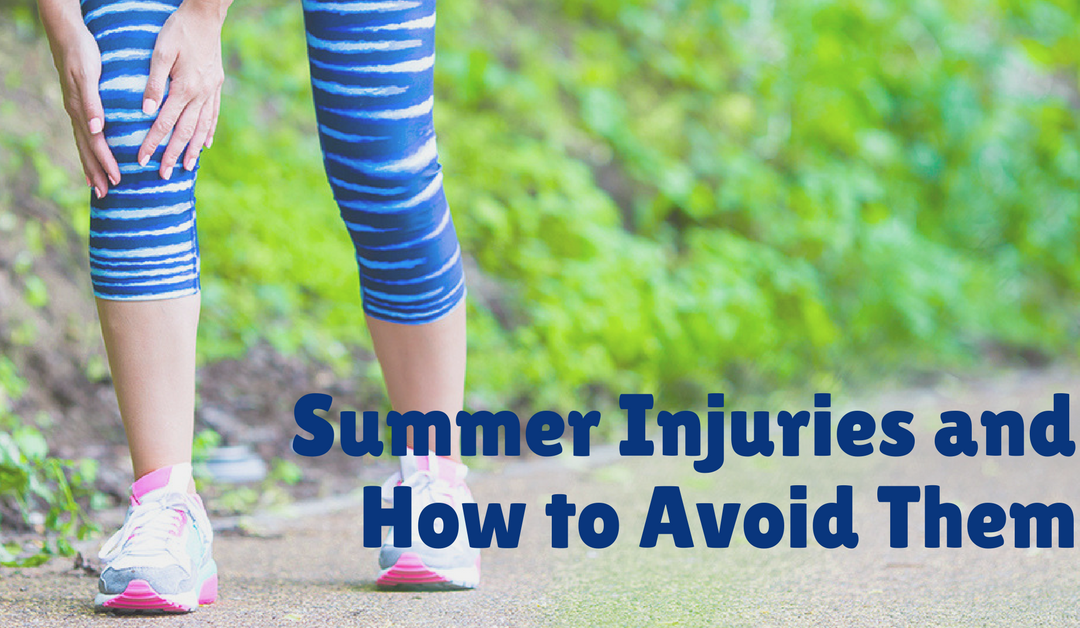Summer is the time for relaxing by the pool, grilling out, camping, and enjoying the beautiful outdoors. We at Family Health Care of Siouxland don’t want you to be stuck inside during these sunny days because of injuries that could have possibly been prevented. Sometimes simply being aware of avoidable injuries can make all the difference.
Sunburn and Sun Poisoning
Bright red, tender skin is the sign of too much time spent in the sun, unprotected by clothing and sunscreen. Sunburns are not only uncomfortable, but can lead to premature aging and skin cancer.
The best way to prevent sunburns is to wear sunscreen. The American Academy of Dermatology recommends using a sunscreen with an SPF of at least 30. You should apply sunscreen to dry skin 15 minutes prior to sun exposure. This allows the sunscreen to latch onto the skin. Remember to reapply sunscreen every two hours, or after swimming or sweating. Be sure to apply sunscreen to all exposed areas of the body. Areas that are often missed include lips, scalp, ears, and feet.
Some other ways to prevent sunburn are to wear a broad-brimmed hat, cover your body, and avoid peak times in the sun (10 a.m. – 4 p.m.).
Severe cases of sunburn can result in sun poisoning. In addition to skin redness and pain, symptoms can include swelling and large blisters, headache, fever and chills, nausea, dizziness, fainting, and dehydration. If you experience any of these symptoms, you should seek immediate medical attention.
Dehydration
The heat makes you sweat, and while that may cool you down, it also means you are losing a lot of fluid. The result is dehydration, which can cause dangerous conditions like heat cramps, heat exhaustion, and heat stroke (also called sunstroke). We oftentimes forget to take a water-break when we are outside enjoying the summer sun, but doing so is essential to staying hydrated.
Be sure to drink water throughout the day. – Don’t wait until you’re thirsty. Another good option is all-natural juice without added sugar. This provides hydration, while also providing important nutrients to keep you active.
Insect Bites and Stings
Most reactions to insect bites and stings are mild and result in little more than redness, annoying itchiness, and a little sting. More severe reactions can occur and may require medical attention. But for most instances, applying insect repellent will keep the pesky critters away.
Be sure to follow the directions on the insect repellent, paying particular attention when
applying to children. Wash off the repellent with soap and water after returning indoors.
Other tips are to wear light-colored clothes that cover your body, such as long pants and long-sleeved shirts. Avoid wearing sweet-smelling products, such as perfume, as insects are attracted to fragrances.
Swimmer’s Ear
Otitis externa, more commonly referred to as swimmer’s ear, is a bacterial infection of the skin of the outer ear. Swimmer’s ear is often brought on by water that remains trapped in the ear after swimming, which causes a moist environment that supports bacterial growth. Symptoms include pain and tenderness in the ear, sometimes accompanied by drainage, and are typically present within 24 to 48 hours after swimming. If you experience these symptoms, you should see a doctor.
To avoid swimmer’s ear, dry your ears thoroughly after exposure to moisture. Dry your outer ear with a soft towel or cloth, and tilt and shake your head to help drain any water from your ear canal. It is also best to avoid swimming in dirty water, such as lakes and streams, where bacteria counts are high.
We hope these few simple tips will keep you injury-free this summer. Enjoy it!

